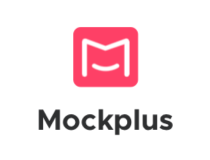

The findings also confirm that a digital euro could, in principle, work online and offline using different technical designs. The tests concluded that it is possible to smoothly integrate a digital euro into the existing payment landscape, while still leaving scope for the market to use innovative features and technologies when distributing a digital euro.

Different design choices were tested to determine if they could be technically implemented and integrated into the settlement system of the Eurosystem.

The exercise included the integration of five user interfaces developed by different providers for each use case (front-end prototypes) and a settlement system designed and developed by the Eurosystem (back-end prototype). It also suggests that different types of architectural and technological design options are available to build a technical solution for a digital euro.ĭuring the period between July 2022 and February 2023, the ECB conducted a prototyping exercise on what paying with a digital euro could look like for different use cases. The research indicates that there is a sufficiently large pool of European providers that are able to develop digital euro solutions. The Eurosystem invited market participants to take part in the market research to gain an understanding of the industry-specific knowledge and the ongoing experience of building potential technical solutions for a digital euro. Today the European Central Bank (ECB) has published two reports on its market research and prototyping exercise, which were both conducted as part of the investigation phase of the digital euro project.


 0 kommentar(er)
0 kommentar(er)
